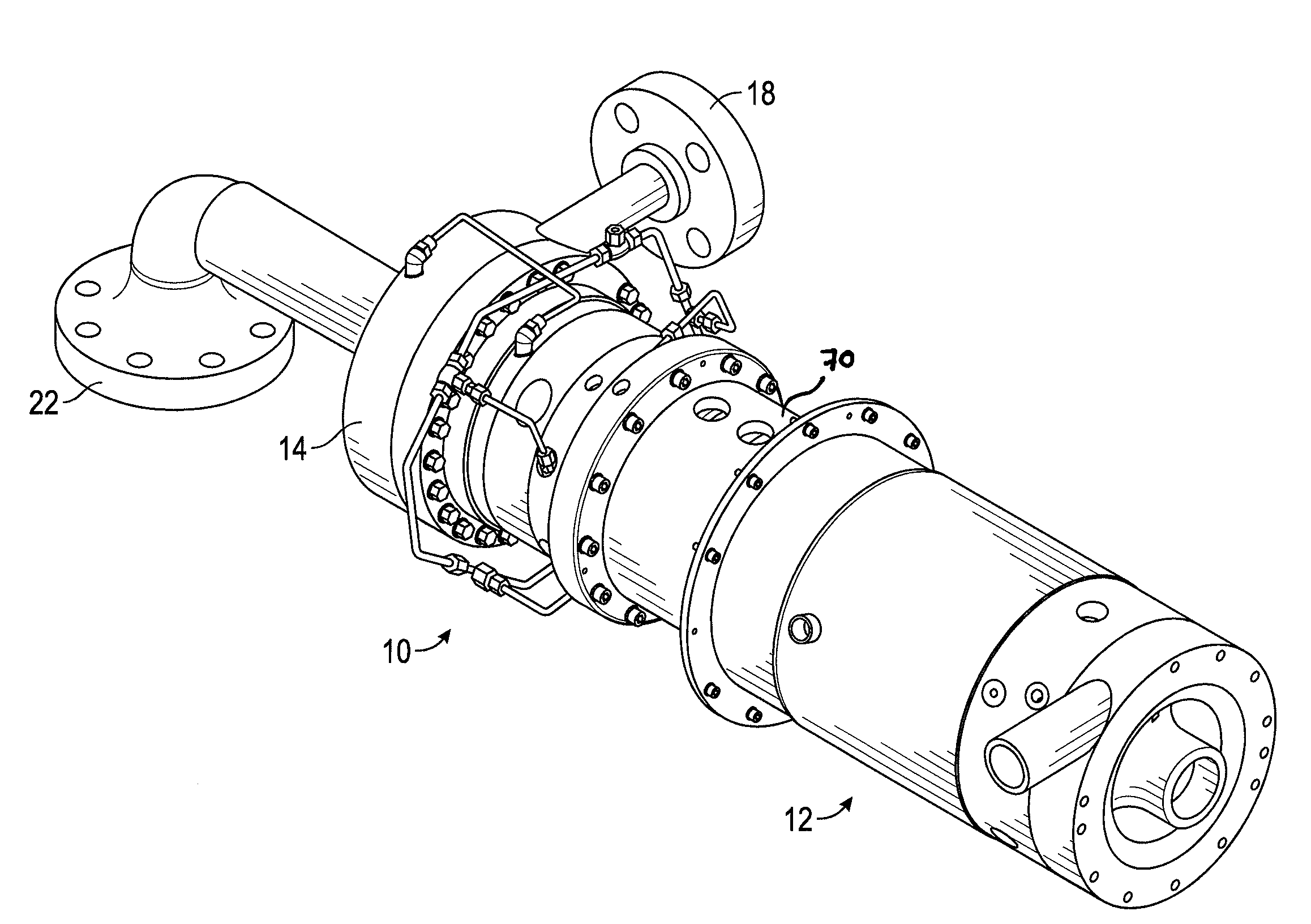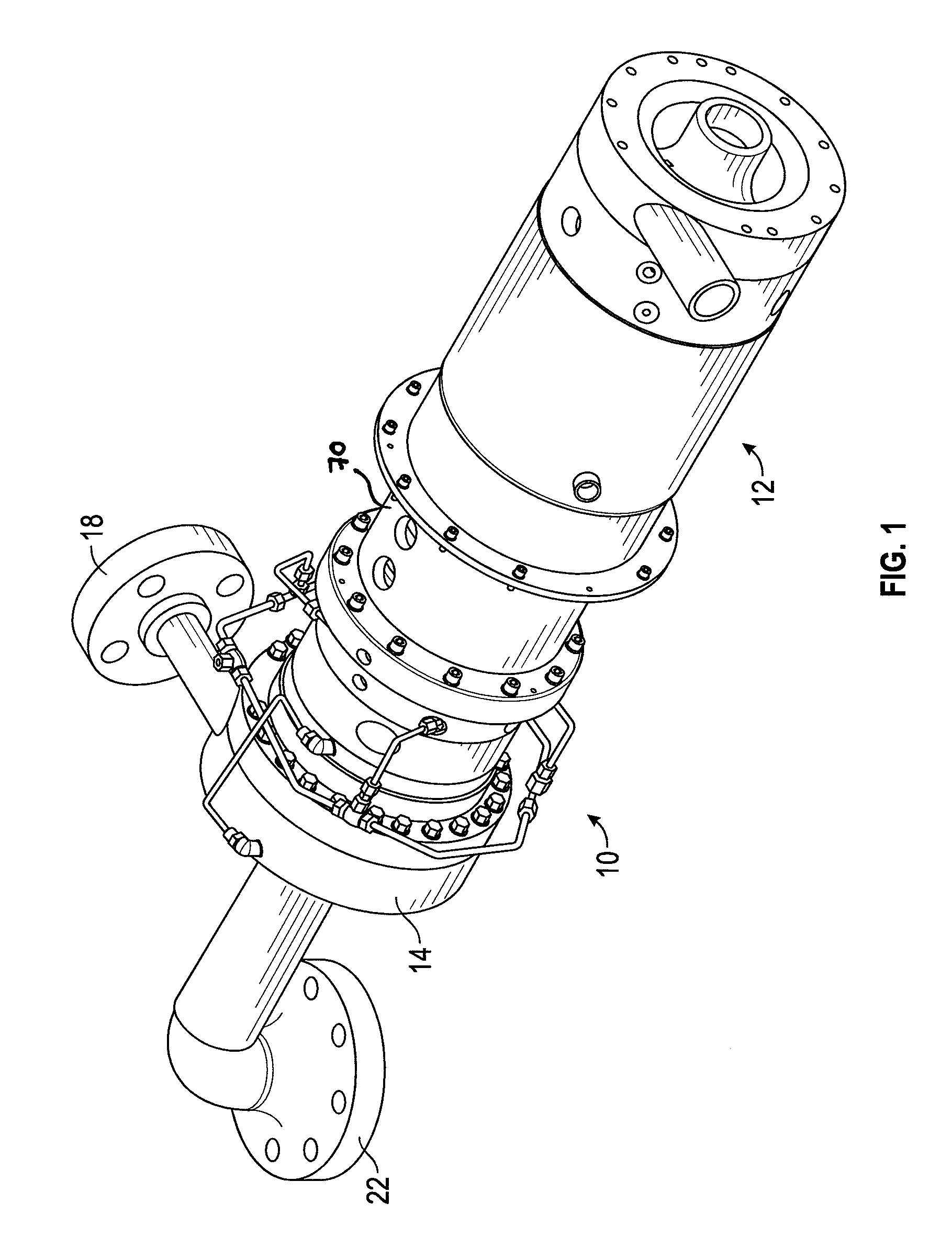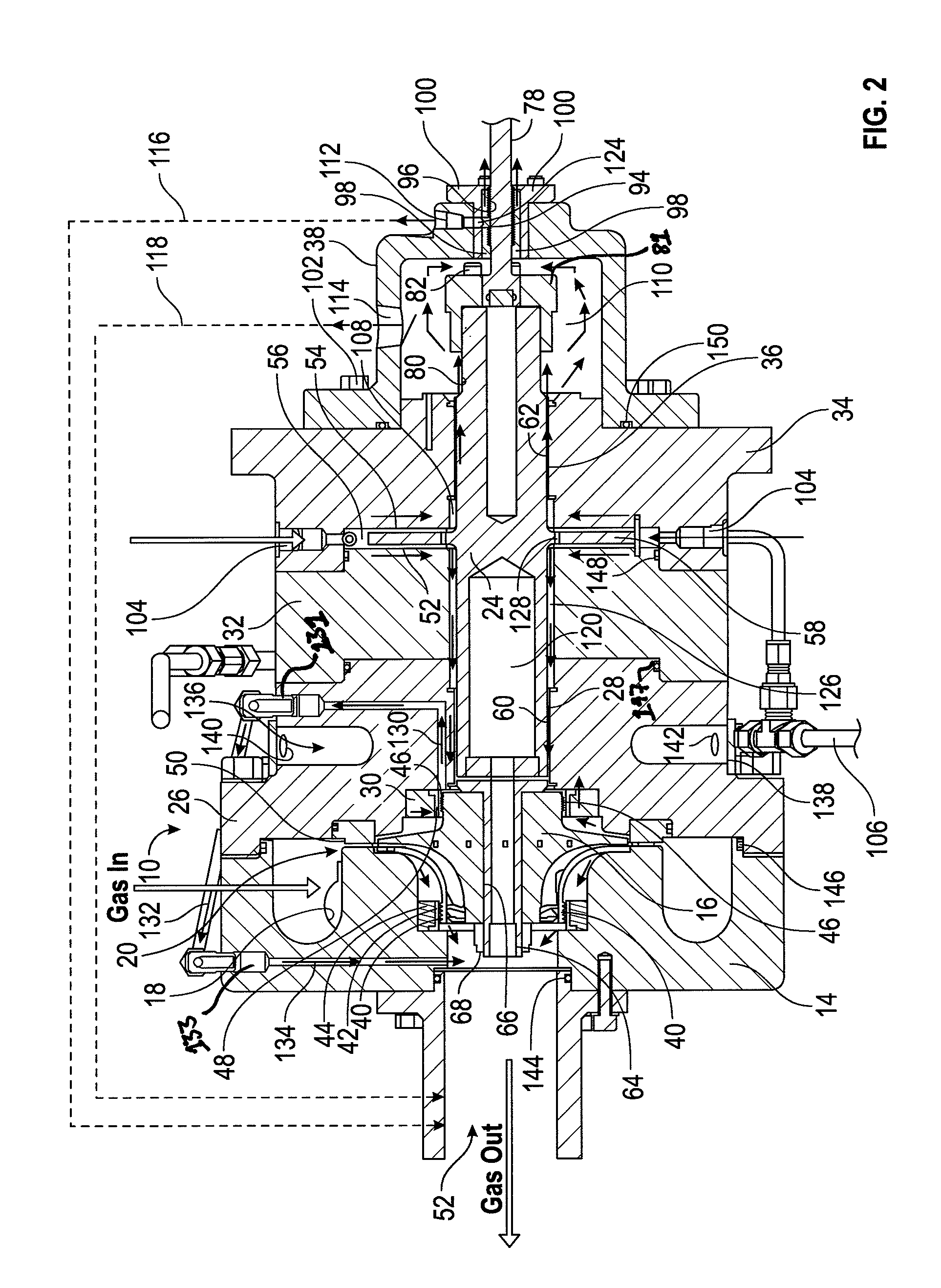Ultra high pressure turbomachine for waste heat recovery
a high-pressure turbomachine and waste heat recovery technology, which is applied in the direction of electric generator control, magnetic circuit rotating parts, magnetic circuit shape/form/construction, etc., can solve the problems of oil contamination of process gas, unreliable oil-lubricated bearings used in the device of u.s. pat. no. 5,045,711, and other problems, to achieve the effect of preventing process gas leakage, minimizing the windage of the alternator shaft, and minimizing iron
- Summary
- Abstract
- Description
- Claims
- Application Information
AI Technical Summary
Benefits of technology
Problems solved by technology
Method used
Image
Examples
Embodiment Construction
[0034]The present invention is directed to a power generating system for recovering energy stored in a process gas. A perspective view and cross-sectional view of an exemplary turbine-driven alternator in accordance with the present invention are illustrated in FIGS. 1 and 2, respectively. The illustrated turbine-driven alternator (hereinafter “turboalternator”) is preferably a small, high efficiency, oil-free device that can be used in various applications, such as for compressed air energy storage, waste gas energy recovery, pressure letdown, gas liquefaction, and low temperature Organic Rankine Cycles.
[0035]The Organic Rankine Cycle's principle is based on a turboalternator working as a steam turbine to transform thermal energy into mechanical energy and finally into electric energy through an electric generator. Instead of water steam, the ORC system vaporizes an organic fluid, characterized by a molecular mass higher than water, which leads to a rotation of the turbine and prod...
PUM
 Login to View More
Login to View More Abstract
Description
Claims
Application Information
 Login to View More
Login to View More - R&D
- Intellectual Property
- Life Sciences
- Materials
- Tech Scout
- Unparalleled Data Quality
- Higher Quality Content
- 60% Fewer Hallucinations
Browse by: Latest US Patents, China's latest patents, Technical Efficacy Thesaurus, Application Domain, Technology Topic, Popular Technical Reports.
© 2025 PatSnap. All rights reserved.Legal|Privacy policy|Modern Slavery Act Transparency Statement|Sitemap|About US| Contact US: help@patsnap.com



